Native Art Gallery
Walking Bear
Walking Bear
Artist: Kakee Negeoseak
Community: Cape Dorset
Medium: Soapstone
Dimensions (in): W3.0 x H 6.0 x D9.0
Reference: 108795
Couldn't load pickup availability
Share
Polar Bear, Nanuq, called the "King of the North", is the greatest predator of the Arctic and a powerfully respected animal. He is the one animal that is at home both on land and water. He is built for his environment and has no troubles surviving the long, harsh winters. The polar bears of Nunavut tend to be solitary creatures, generally travelling alone in the winter. When you see two bears together, they are most likely siblings who have learned to hunt together with utmost success.
Some Inuit believe that how we live our lives affects what we become in the afterlife. Apparently, the best reward for a life-well-lived is to return in the form of the polar bear. This is because the ‘King of the Arctic’, as he is endearingly called, is strong enough to survive the long, cold winters.
This piece is carved in honour of the animal itself; it celebrates the polar bear, his spirit, his strength, and his legend. May he always be a source of inspiration.
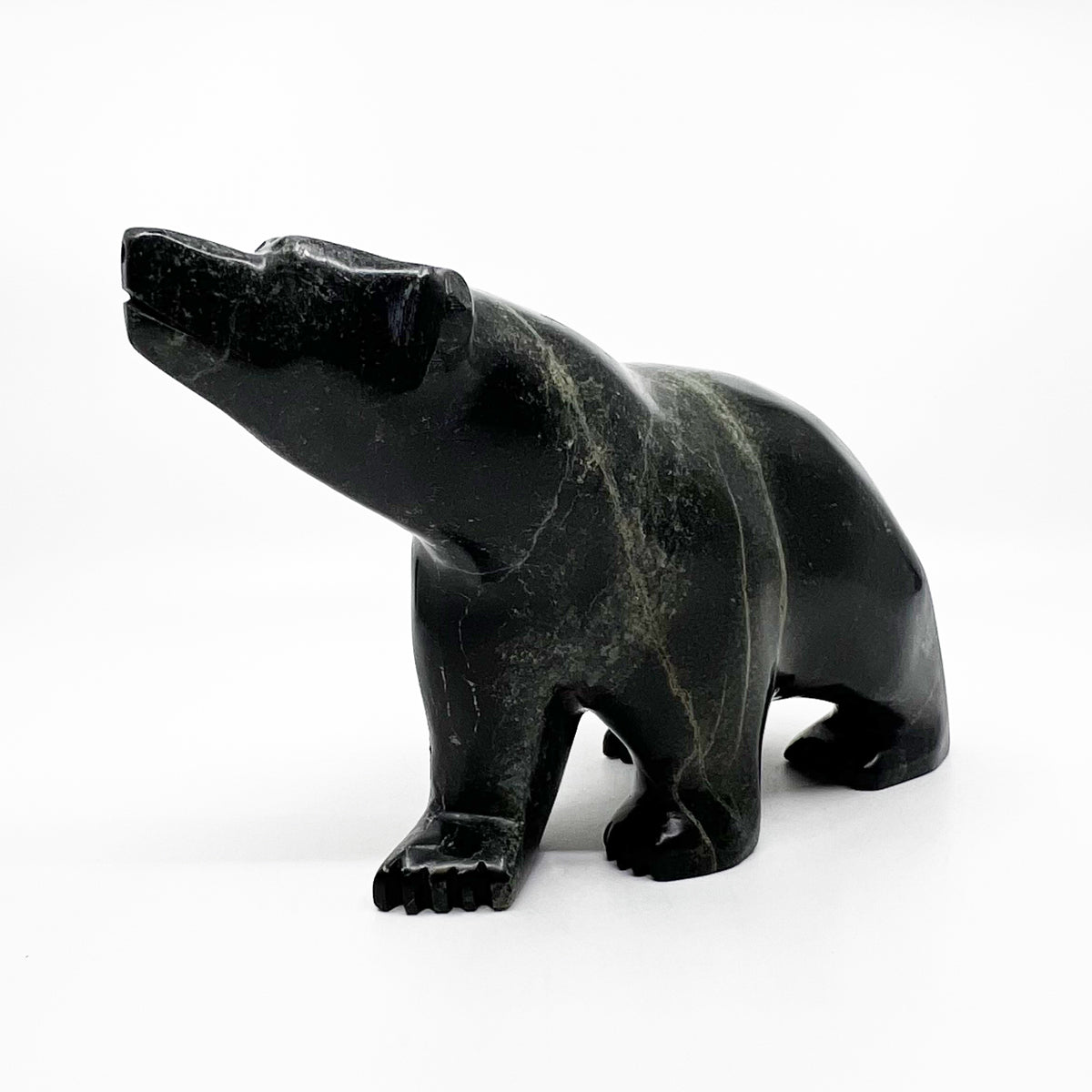
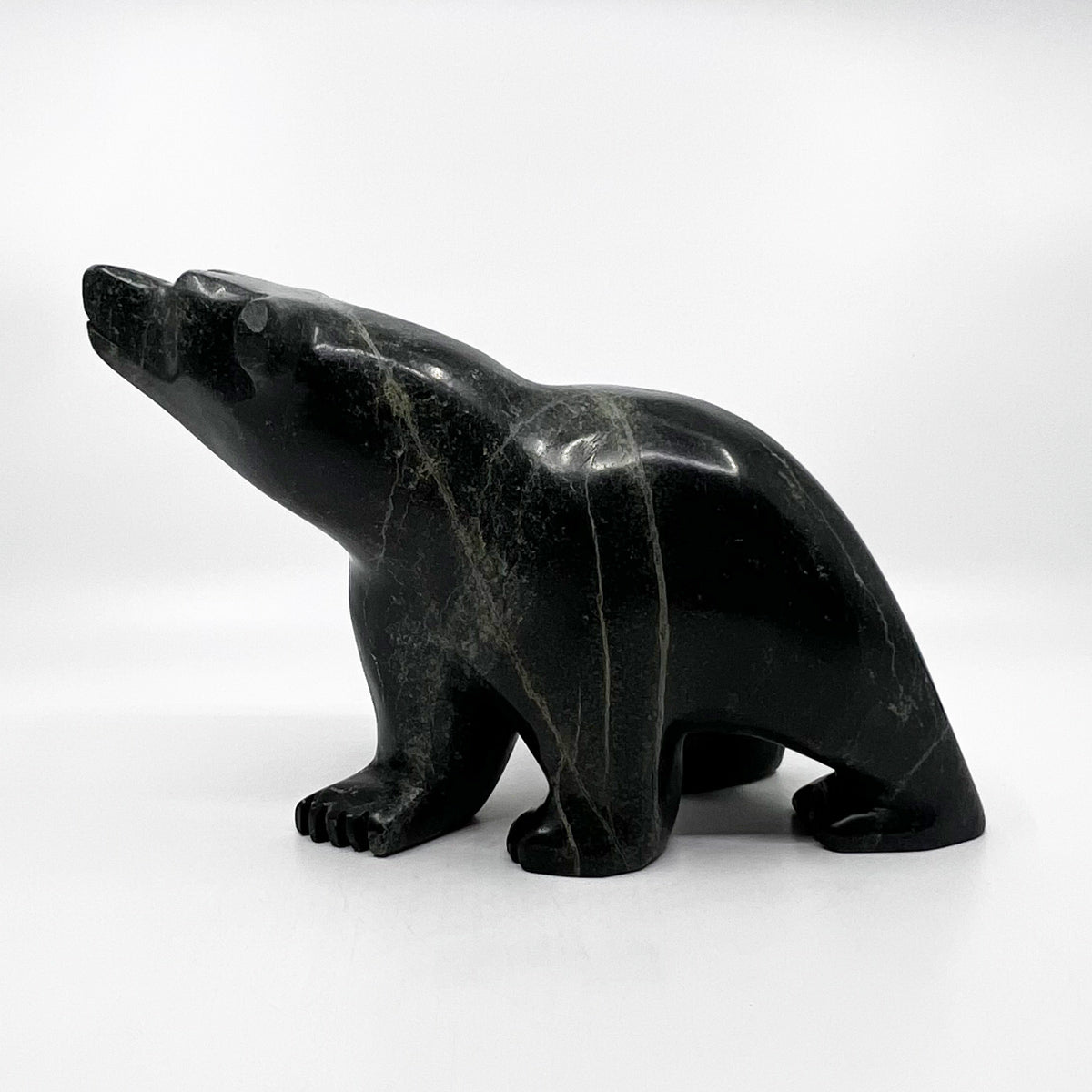
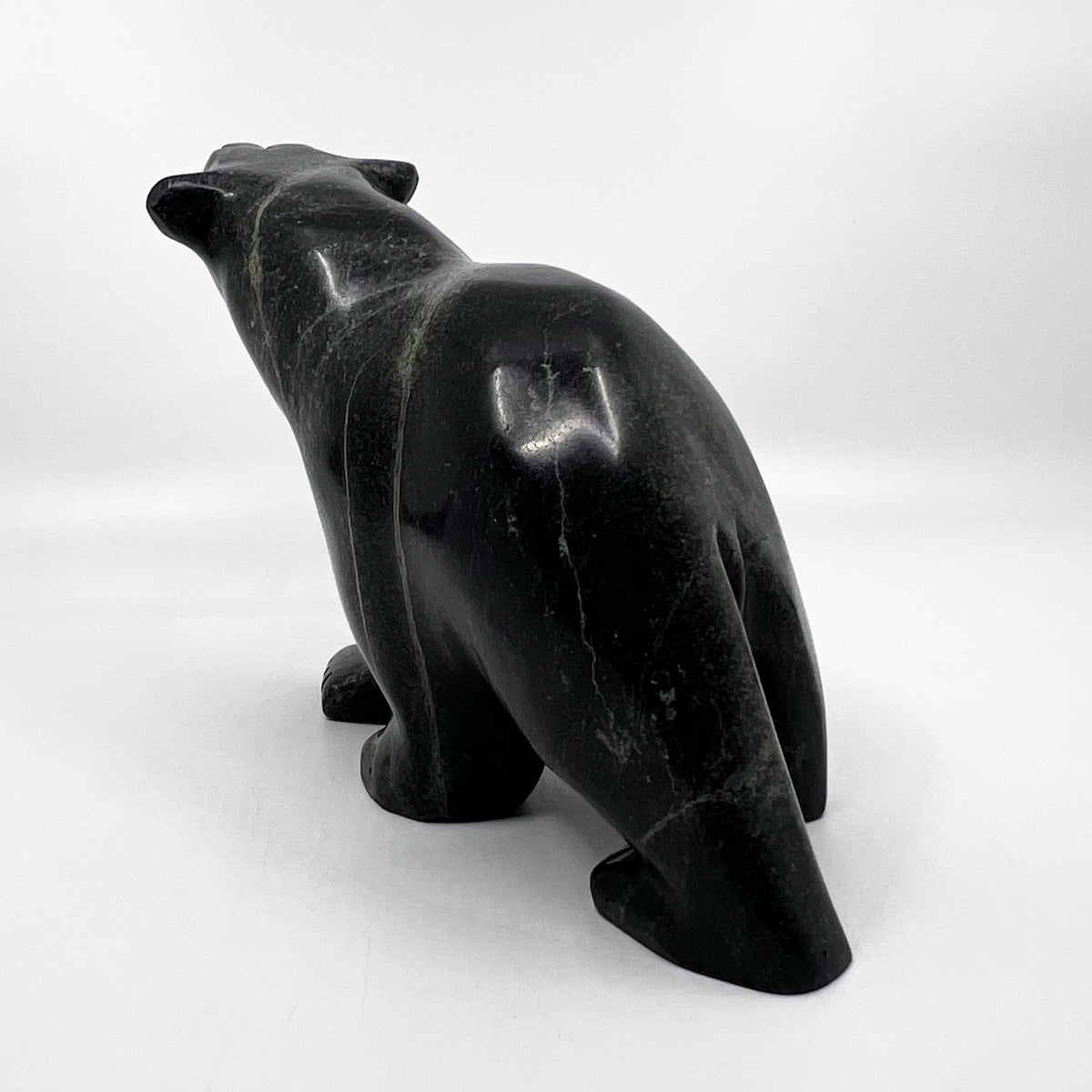
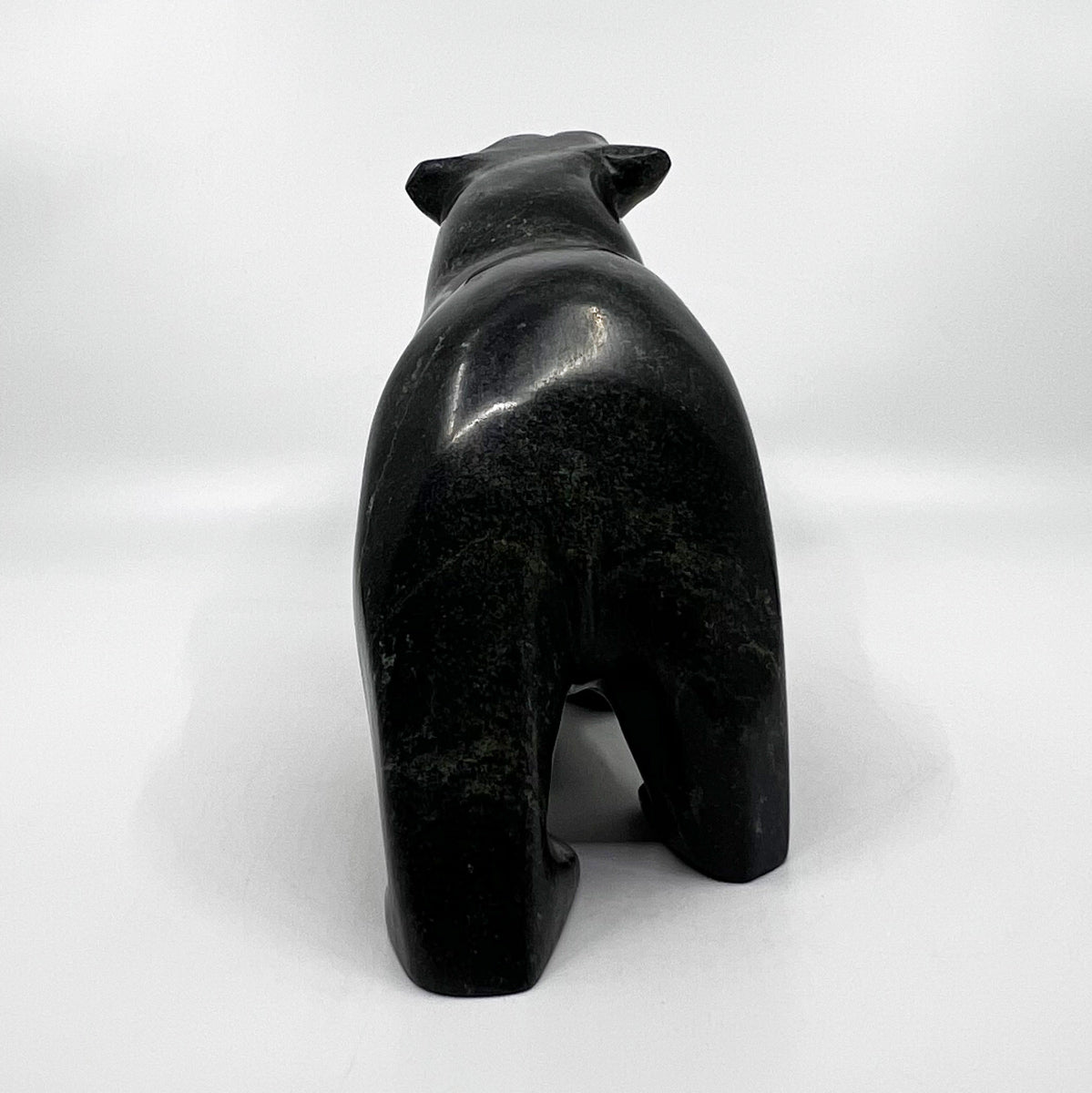
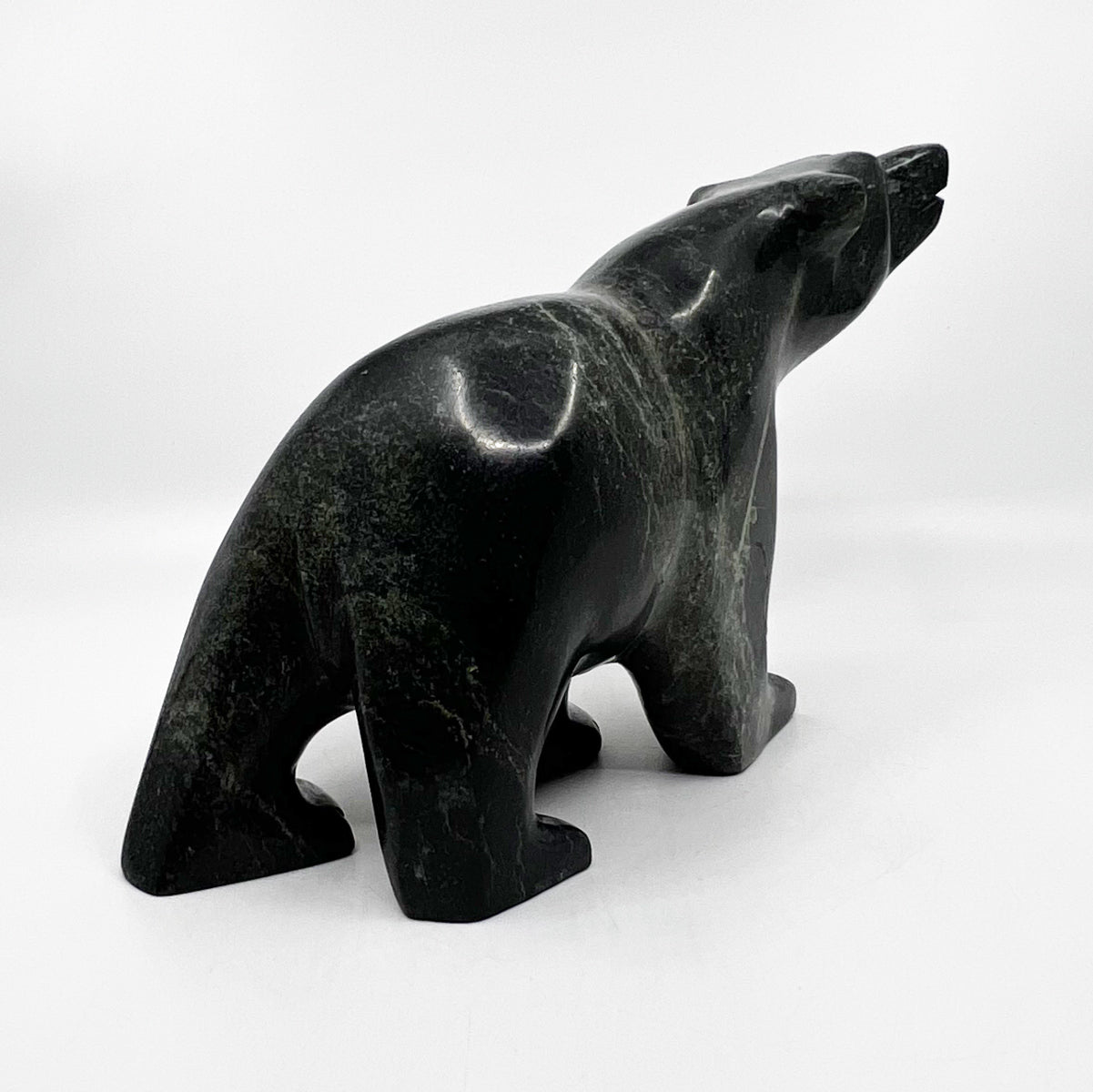
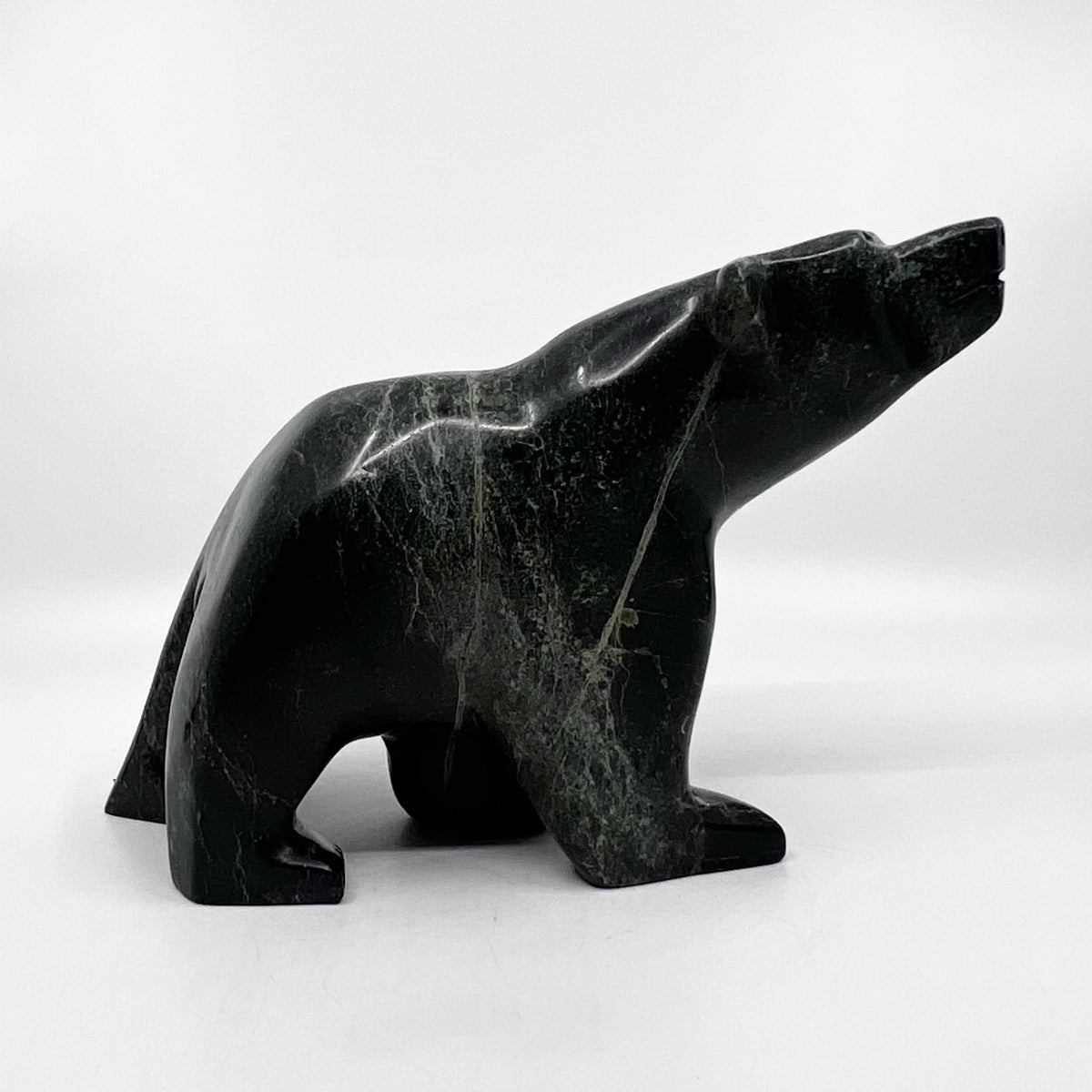
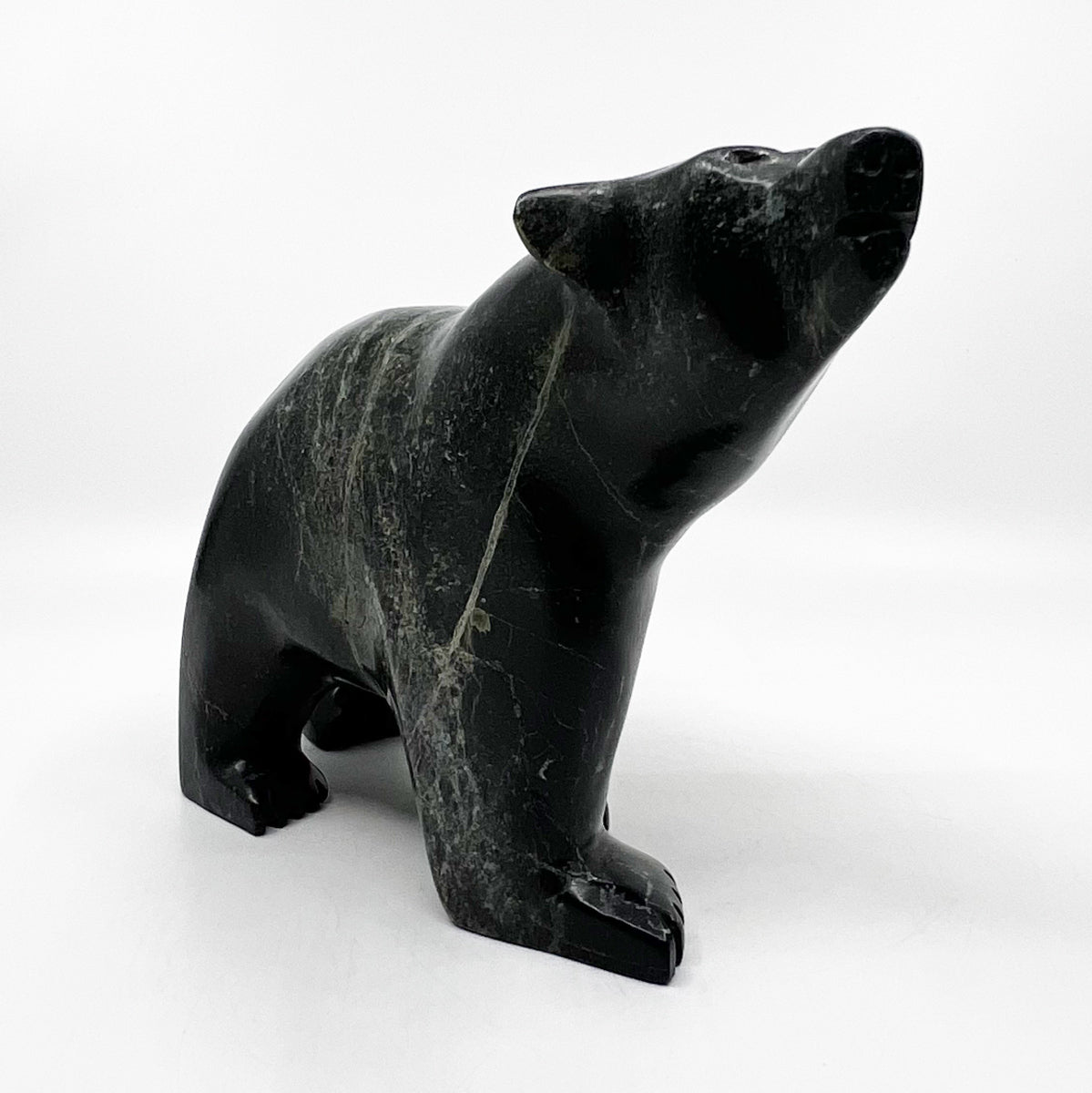
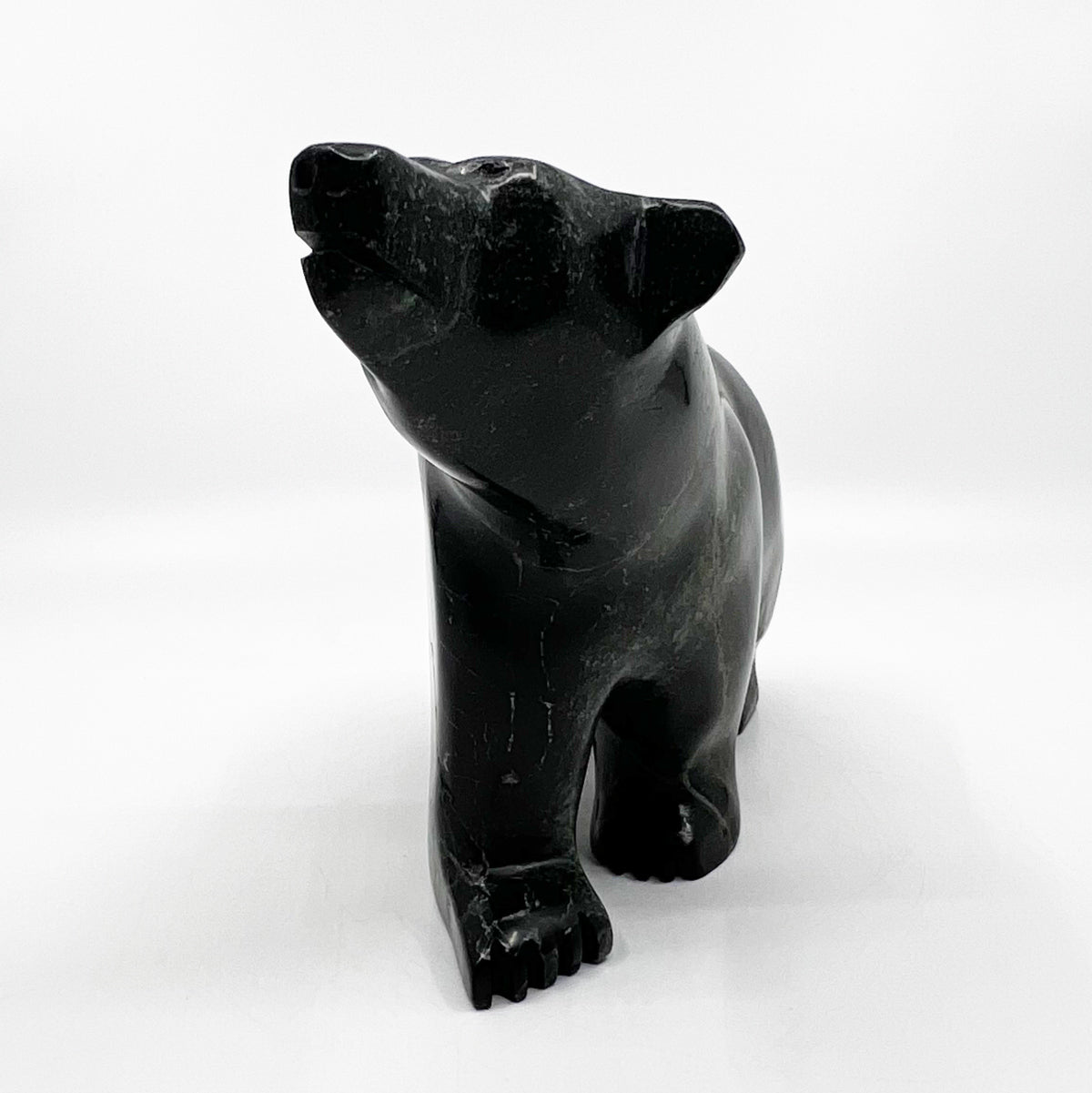
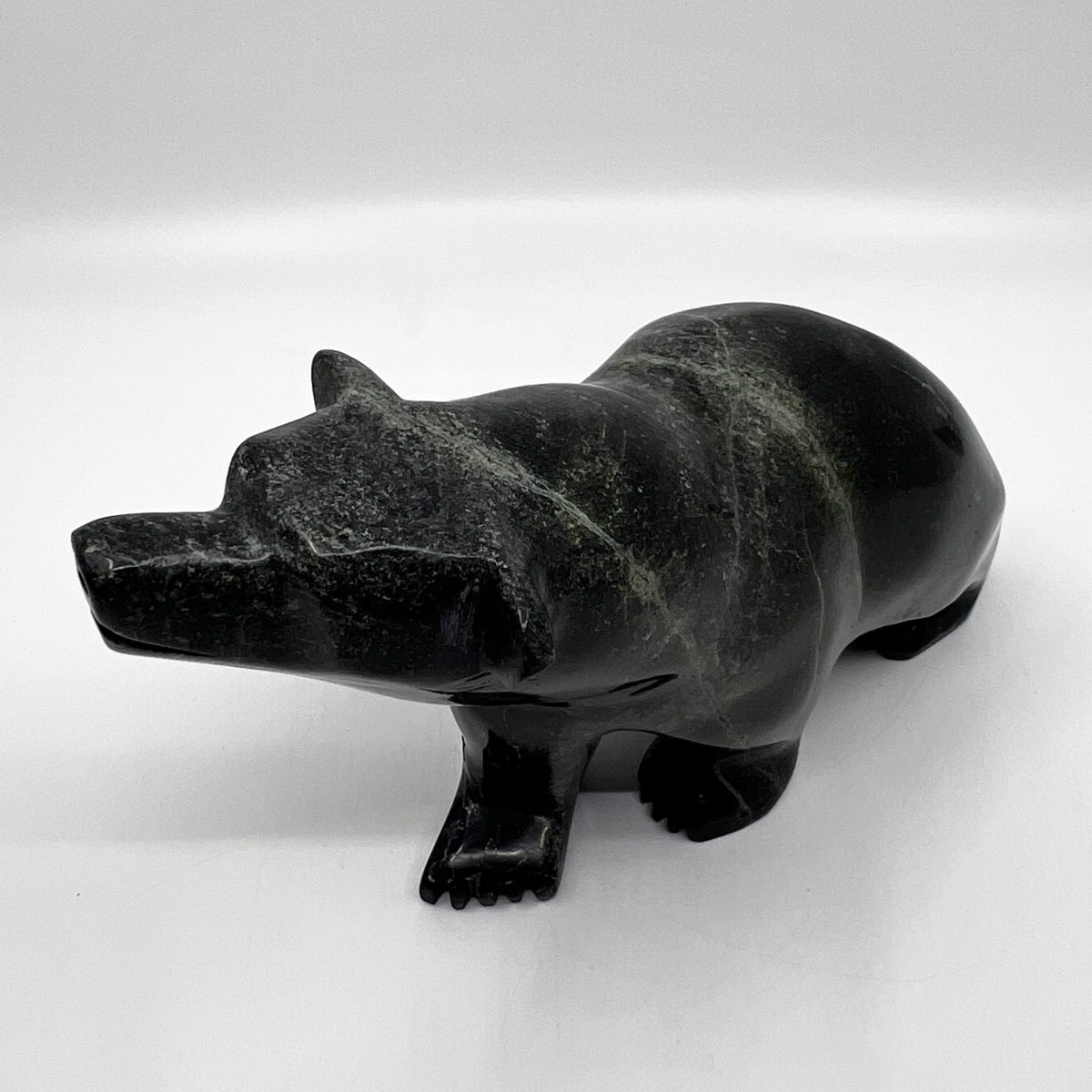
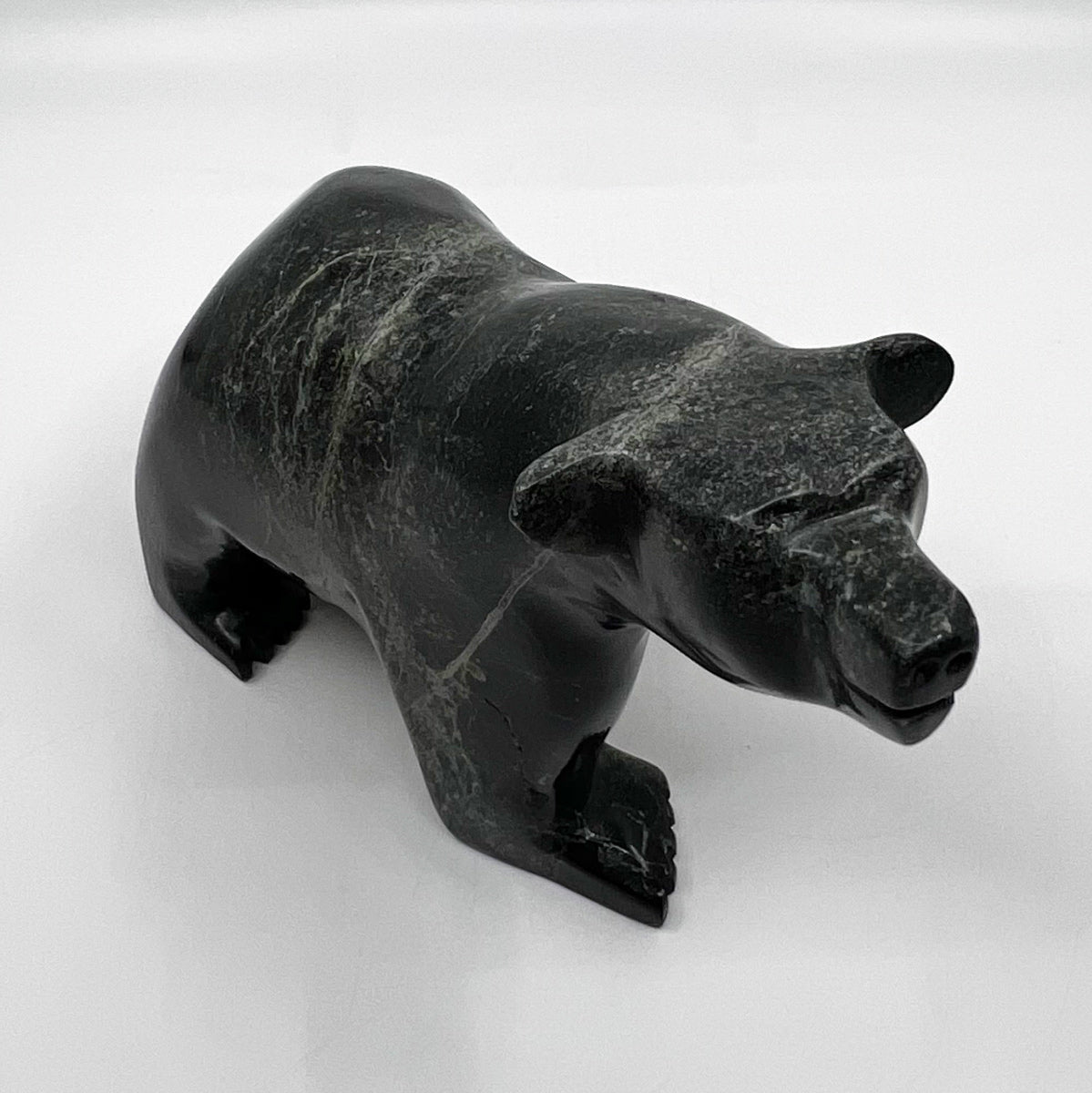
Product SKU
Kakee Negeoseak
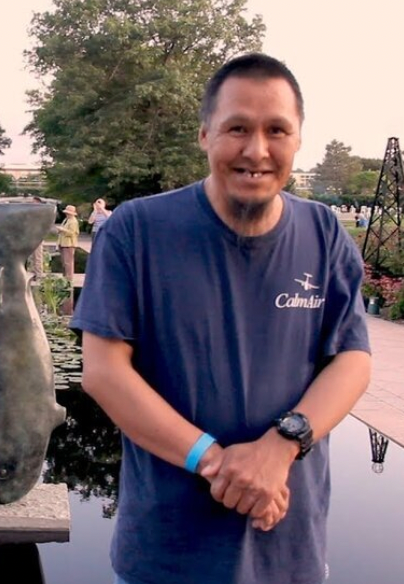
Kakee Negeoseak is a notable Indigenous artist from Nunavut.
Kakee was born in Iqaluit but moved to Cape Dorset in 1993. He began carving at the age of 16 and although he is self-taught, he also learned by watching other carvers. His father, Ningeosiak Peter, and his mother, Parnee Peter are both sculptors in Cape Dorset. Kakee’s grandfather, the late Jamasie Teevee was a well-known graphic artists.
Known for his intricate and vibrant works, Negeoseak's art often reflects traditional Inuit themes and the natural beauty of the Arctic region. His style combines traditional techniques with contemporary expressions, making Kakee a significant figure in the modern Indigenous art scene.
Negeoseak's art is celebrated for its detailed depictions of Arctic wildlife, cultural symbols, and personal narratives. He uses a variety of mediums, including printmaking, drawing, and sculpture, to convey her connection to his heritage and environment. His work has been exhibited in various galleries and art institutions across Canada and internationally, contributing to a greater appreciation of Indigenous art and culture.










